There’s been a shift in B2B branding. One that is impossible to ignore. One driven by something we all now take for granted but, and it seems hard to imagine, one that didn’t exist thirty years ago. The internet.
It used to be that the giants of the brand industry had a rich line of work creating annual reports. Glossy homages to B2B brands and their commercial success. Commissioned by the CEOs for their investors and shareholders. Their bible of success. Their report card. The front pages would be a review of the year detailing significant achievements and conveying visions for sustained success. Often on glossy paper, like a high-end magazine. This would be followed by pages and pages of beautifully formatted charts and tables detailing the financial prowess, or otherwise, of the company over that year.
The legends of turnaround and the investors of note used to say that these pages of numbers and bar charts told a story if you only knew how to read them. A story of strength or weakness. Opportunity or threat. Storytelling but of a P&L kind.
Then everything changed. Not overnight. But inexorably and subtly. Like the biggest changes always are.
The birth of storytelling
First came the investor site, detailing the financials and performance sitting alongside the main company offer. But the change kept on coming. Goodbye investor site, hello link on main site, tucked away in the footer or relegated to the bottom of the menu alongside privacy. And then worse still. Everything shipped out to an off the shelf platform with just the numbers on show. No story. No narrative at all, just an interface to view charts.
But here, in the demise of reporting is the birth of storytelling, grown from three small seeds. Search, SaaS, and search for purpose.
Search, or rather nowhere to hide, has changed the way B2B has to engage with every kind of customer and user. As soon as everything can be found, everything needs to be linked together with a story, with a joined-up narrative.
Then SaaS and product-led growth, or PLG to those in the know. Self-serve software for B2B use with no sales teams to spin a tale. Just what you can find, read, or watch online forcing B2B to in-fill and create that connected story.
Now add purpose, the ‘why’ a company exists into this mix. How to get a prospect to believe, to spend. How to get talent to commit to work for you. How to align with macro trends of ESG. Stand for something. Find your why. Find your story.
These three interconnected forces have forced storytelling right into the heart of B2B.
Now every B2B brand needs to know why it exists, why it is special, why what it does matters and the change it is creating and delivering. ESG is a consequence of this search for narrative and truth, a recognition that knowing why you exist and understanding your effect on the world are interconnected.
Storytelling makes you stand out too, so, when you are found you can be engaged with and understood. And engaged and understood means you can be considered. Considered means you can be bought and consumed and that in turn drives repeat purchase, loyalty, and advocacy. All from the story.
A good story told well over every channel enables your business to travel further and reach more of the prospects and audiences who matter. More than your sales team ever could. Your story broken down and communicated in the right way from your site to PPT deck, LinkedIn posts to X (if you dare) is all about reach and stretch.
Finding your style
So, how do you find your story? What makes a good story? And how do you use your story? That’s where the power of the branding process comes in.
Start with your ‘why’. Why do you exist? What is the story of the moment when this business started, what problem was it solving, what was the challenge it was addressing. There is always a story, tale, a eureka moment. You just have to dig for it. It will be there.
Next, find your tone of voice. The way you write, communicate, and tell the story. Are you thoughtful and contemplative? Perhaps you are energetic and dramatic. Maybe witty and cerebral. It’s all good. It’s just whatever is you. Which feels like the style you can own. And be comfortable in.
Now tell your story, share your accomplishments in the tone that adds character to your offer and place in the market. If you do it this way, others will understand it. If others can understand it, they can tell your story for you. This is a huge step. You are making it easy for audiences and prospects to connect to your offer. Without you in the room. Without your best salesperson. Your storytelling is selling for you.
You are giving your offer character. And in doing so, making your business memorable. Front of mind. Considered. And ‘added to the shortlist’. Remembered and talked about. And ultimately, purchased and consumed.
Why stop there? The next step is to understand the challenges you are solving today for the audiences that matter. Sales teams usually know the answers, customers can usually tell you also and account and customer success teams always have a good sense of it. Recast your offer around the challenges you solve. Harness that tone that feels like you and adopt the storytelling technique and apply it to the USPs (the standout points about your business) and hygiene factors (things you have to be able to say to simply be credible), the benefit statements and proof points. Bring function and fact to life through stories of solutions and challenges solved. Humanise and make your offer relatable.
The storytelling adds layers to your business and its offer. At its core it gives you provenance, your ‘why’, your ‘how to’, the story of the origination of the company. It also gives you character, which is the chance to be remembered, the opportunity to be different and to stand out. And finally, it empowers audiences to self-serve, to become advocates and evangelists for your brand and offer.
The key to being memorable
B2B is blending into B2B2C. It’s a time where companies can always be found. Where the need to differentiate and demonstrate why they exist, why they are special, why they should be considered matters ever more. When the channels that are open to prospects and audiences are open all the time. The power of storytelling becomes immense. It is the key to compelling. It is the key to explaining your difference in a way that anyone can understand. It is the key to being memorable. To be considered. To be compelling. To be must have. To be purchased. And to build loyalty and advocacy.
This different way of thinking about communicating then means your visual expression, your brand, alive in people’s eyes, can similarly take a step up. Suddenly the stock image play, the obvious pic of smiling people shaking hands doesn’t make any sense. This lift in both the narrative and visual expression is driving change right across B2B. For the betterment of everyone. For employees who feel proud of working for a great company, who knows why it exists and where it is heading. For prospects and customers who understand and connect to the story and for wider audiences from holders of capital and the media through to prospective team members and new employees who see it as a company with a direction and a future–a place to commit their time and celebrate their achievements.
In short, storytelling is the ultimate form of selling. So, embrace your story. Find your authentic voice. And reframe everything you are and everything you do in a way everyone can understand and connect to.
Like a great film or a fantastic book. Become talked about and remembered. This is the power. Branding does this.


 Whether you want to learn how to use LinkedIn, X or Facebook for marketing, or need to brush up on business skills like leadership, presentation skills or managing meetings, you will find something to enhance your professional skills with these on-demand courses.
Whether you want to learn how to use LinkedIn, X or Facebook for marketing, or need to brush up on business skills like leadership, presentation skills or managing meetings, you will find something to enhance your professional skills with these on-demand courses.